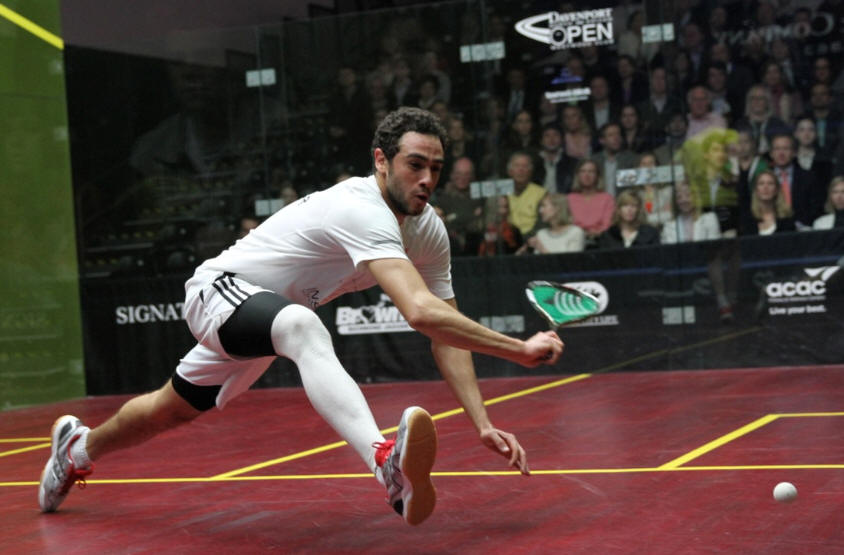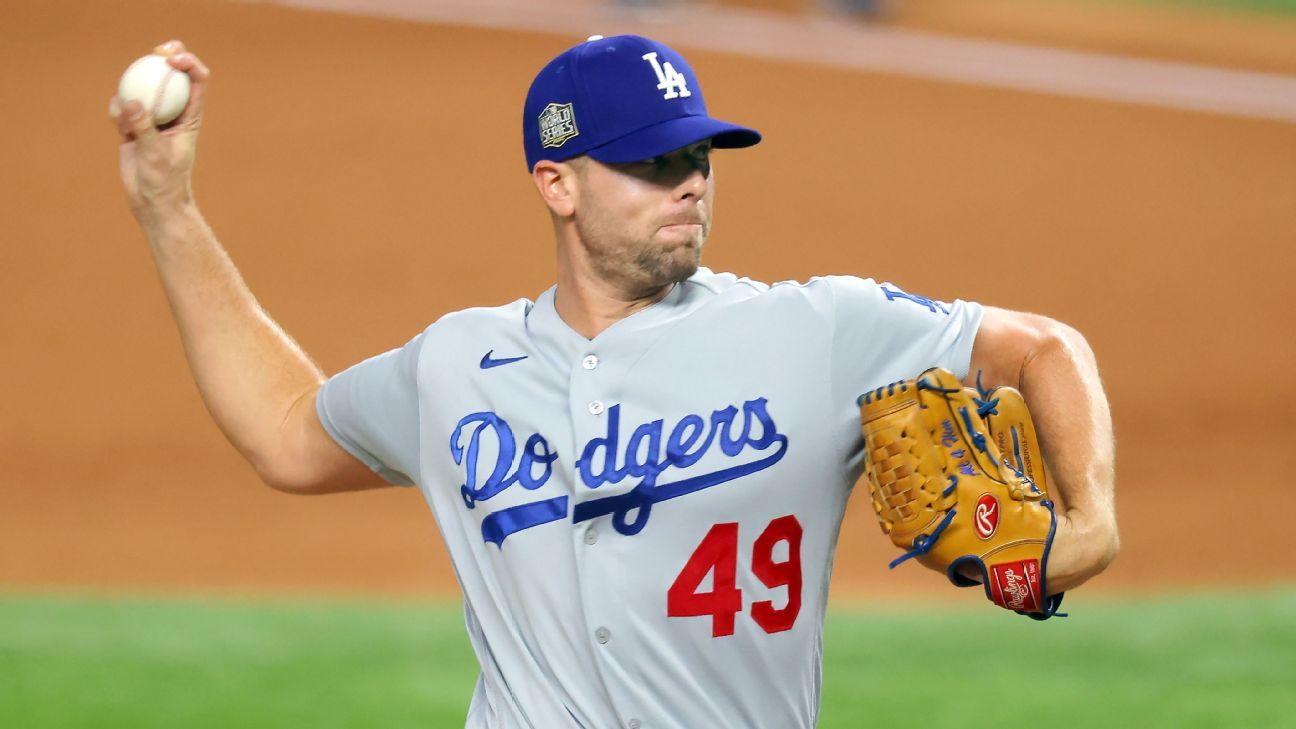
Ramy Ashour had to rely on his extraordinary skill when his fitness was compromised by a leg injury
The pro game is underscored by fitness, but is that frightening off new players at club level? Let’s discuss.
By PHILLIP MARLOWE – Squash Mad Correspondent
A recent Twitter conversation has me wondering whether squash has focused on fitness too much and is actually losing players because of it. I also wonder what professional squash players want from the game is actually good for the sport itself. Read more to find out.
Before I start talking about the content of this article, I’d like to talk about the context for me writing it. On June 17, MyyrSquash tweet a wonderful little image talking about good attitude in squash tagging, amongst others SquashMad, who then retweeted with the phrase “One of the greatest challenges facing many squash players is anger management.” and linking to an article from 2015 entitled “Honesty is the Best Policy”.
This caused BannySquash to reply with “Any sports training should start with mental skills and recovery education, we’ve been a sport that’s over-emphasised physical training”. I then replied “Have we overemphasised it or is that just the nature of our sport? I don’t disagree that mental skills and other aspects have been neglected, but some sports, purely by their nature, are predominately physical. I wish we could reduce the physical requirement of squash.”
This tweet was then replied to by SquashMad with “Phillip, most top pros absolutely thrive on the physical nature of the sport and resent any attempts to make the sport “easier” or “softer”. My article was about anger management, just one of the many areas of mental strength required for world-class performance.“.
It was clear that SquashMad and I were talking at cross-purposes. I was only replying to Banny Squash’s claim that “we’ve been a sport that’s over-emphasised physical training“, but the final SquashMad tweet got me thinking about the disconnect between what professionals players want and what club or recreational players want. It also led to the thought that “is what made squash popular in the 80s and 90s still relevant today?”
So this article will have two themes, but they are linked.
Let’s start with “what made squash popular?” Back in the late 1970s and all through the 1980s, squash was seen as THE best way to get fit. Jogging had become popular, but for many it was boring. A runner called Jim Fixx helped to launch the jogging boom. Sadly, he died, aged 52 … while out jogging.
Squash, on the other hand, was fast, dynamic, fun and gave you a great workout in 45 minutes.
Jonah Barrington took the game to the next level with his physical training, commitment and professionalism. Squash had arrived BIG TIME. Geoff Hunt happily engaged in the knowledge that he had to stay fit to stay in front (much of the time). Hunt and Barrington were not only locked in some phenomenally physical battles on court, they were constantly trying to outdo each other with the sheer brutality of their training programmes at either ends of the planet.
Jonah’s warm-up routines, before his real training began, would have disabled most people. Others soon picked up the challenge and ambitious players were soon immersed in a training regime that revolved around seeing how many 800-metre sprints they could perform with a miniscule break in between each one. Ten reps, anyone?
Jonah Barrington (left) and Geoff Hunt trained in brutal fashion for their physically gruelling matches
Then along came Jahangir Khan and bludgeoned everyone off court with a high-power game based on his incredible fitness. Jonah himself was in Gamal Awad’s corner when the Egyptian “Grasshopper” chose to challenge Jahangir for fitness.
Read the chapter in the brilliant book Jahangir Khan 555, co-authored by Rod Gilmour and Squash Mad editor Alan Thatcher (who was there at Chichester Festival Theatre and still has the shorthand notes of every rally), to understand how JK dealt with Awad’s attempts to wear him down.
Jonah’s advice was pretty much “Let’s keep him on court for two hours and then see what happens”. Well, Awad certainly achieved that, but when Jahangir won the third game to take the match time to around two and a half hours, Awad’s body could not cope any more and JK wrapped up the fourth in a matter of minutes. The match time was two hours and 46 minutes. For a 3-1.
One writer likened the whole encounter to watching paint dry. It was full of long, attritional rallies, but a little short on excitement. Yes, it was all about the fitness.
No wonder the SRA’s slogan at the time was “Don’t play squash to get fit, get fit to play squash”. From that moment onwards, squash became a physical game. The fitter you were, the better your chances of winning.
Before I continue, I need to say that, as a coach, I have tried to emphasise technical and mental skills above physical ones. I’ve been teaching my pupils visualisation since 1994. Fitness comes and goes, but skill stays with you. Back to the article.
The fitness aspect is still true. During the lockdown, we have had a perfect example of the mindset of players and coaches. I would guess that 95% of the things posted on social media have been about fitness training. As far as skills were concerned we got some fun, but ultimately abstract “skill challenges”; hitting balls into toilet roll tubes by Daryl Selby, or some amazing trick shots from Adam Murrills, now dubbed the Lionel Messi of squash!
Everybody loves a no-look ?? @305SQUASH @dunloptennis pic.twitter.com/K7Axh0Xoa7
— Adam Murrills (@ajmuzza1990) May 18, 2020
Yes, some brilliant fun, but does that really help our squash? I tried by creating “Racket Skills at Home” videos where I gave players hitting challenges, but let’s be honest not everybody has the option of a suitable wall to use. My point being, just when players could have used the lockdown to improve their racket skills, the game itself promoted physical fitness over almost everything else.
Now, before you accuse me of forgetting how important it is to stay fit, so that when we go back on court we don’t injure ourselves or have lost too much fitness – that’s my whole point. Has squash become fitness obsessed?
The business of fitness has moved on from the 1980s. The rise of gyms, studios, pilates, yoga, zumba, boxercise, HIIT, plus all the plethora of new equipment means the market is saturated. This is, perhaps, and I admit to taking a shot in the dark, why racketball has become so popular. It’s very easy to learn (that’s another topic!) but being very fit is less important. You can still play a great game. Is it true that if you play somebody at racketball and they are much fitter than you, they win? I don’t think so.
That’s why I tweeted “I wish we could reduce the physical requirement of squash”. I like the idea that you need to be fit for squash, but not that it is the most important aspect of the game. What could be changed to make that happen? I have no idea. Is it what we should be worrying about? Again, I have no idea. What I do know is that what was once the principle selling point of our sport, fitness, is not necessarily what is going to make squash popular again.
Which leads me on to the second point: Is what is good for professional squash good for the sport itself? SquashMad’s tweet contained the phrase “most top pros absolutely thrive on the physical nature of the sport and resent any attempts to make the sport “easier” or “softer”.” I don’t disagree with this, but just because the pros “thrive” on something, should we automatically assume that it is good for the sport? I don’t believe so.
Jahangir Khan took fitness to new levels in the 1980s, as Gamal Awad (right) found to his cost at Chichester in a match lasting two hours and 46 minutes
I have a deeply held belief that professional and amateur sport has been getting further and further apart, and I don’t just mean in standard or ability. All professional sport is entertainment now. The more entertaining a sport is on TV, the more popular it seems to be.
Squash suffers from not looking spectacular on TV, unless you have played it to a highish level, in which case you can appreciate what the players do. You might enjoy watching it, but it doesn’t look as amazing as other sports do. The pros’ superb athleticism is not easily seen.
Does that mean we should make changes to the game to make it a better “TV” sport? Maybe. Will those changes be good for recreational players? Maybe not.
Let me give you some examples. Imagine the pros asked for a slower ball. A triple yellow dot, if you will. This might make it easier to “smack a roller”, but will leisure centre players benefit? I highly doubt it and before you say that a leisure centre player wouldn’t use the triple dot, you only need to visit almost ANY facility around the world to see players using the double yellow dot in the mistaken belief it’s the “right” ball to play with. I suppose you could call the triple yellow dot “the pros’ ball”, but recreational players would still play with it. A last resort would be to not selling to the general public.
Now imagine the pros wanted the tin lowered to 12 inches. WOW! That would certainly make the pro game more attacking. Surely that would enhance the visual aspect on TV. Perhaps. But again, besides the logistics of actually lowering the tins on courts, would recreational players benefit? No, I don’t believe so. What about smaller-headed rackets, to make skill more important? That might then make it harder for new players.
Gregory Gaultier famously played through the pain barrier to win matches on one leg
Do we even want to be one of the few sports that actually has different rules or conditions for professional and amateur versions of the game? I don’t think that is a good route to even consider.
So where does that leave us? Let’s sum up. Squash is becoming more and more focused on fitness. Do recreational players “get fit to play squash or play squash to get fit”? I think the second. If fitness becomes the most important element a sport emphasises, are we still a sport or just an activity?
Perhaps I am worrying about nothing. Perhaps I am seeing shadows in the dark, but I can’t help feeling that if squash were a little less focused on fitness and more focused on skill and fun, we might attract a lot more people.
It certainly wasn’t his fitness that allowed Gregory Gaultier to win that famous battle against Mohamed ElShorbagy on one leg at the ToC a few years ago. And, for much of his career, Ramy Ashour had to adapt his game because of injury and relied on sheer skill and surprise to remain in the game for as long as he did.
I am sure you may disagree, at least with some of my points, so please add a comment below and we can discuss it.
Resources:
MyyrSquash Tweet: https://twitter.com/MyyrSquash/status/1273196038472503297
SquashMad Tweet: https://twitter.com/SquashMadDotCom/status/1273197036129660928
SquashMad Article: https://squashmad.com/coaching/honesty-is-always-the-best-policy/
CoachPhil Tweet: https://twitter.com/SquashCoachPhil/status/1273552107392708608
SquashMad Tweet to my tweet: https://twitter.com/SquashMadDotCom/status/1273643704721510402















 Phone: (800) 737. 6040
Phone: (800) 737. 6040 Fax: (800) 825 5558
Fax: (800) 825 5558 Website:
Website:  Email:
Email: 






